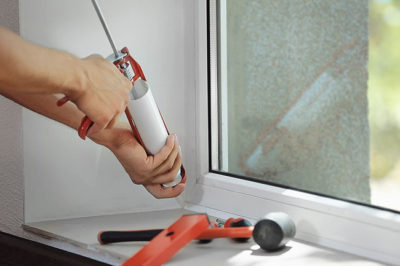Bonding Basics: How to Choose the Right Adhesive
 When it comes to adhesives for home use, there is a wide variety to choose from. But you have to be careful which types you use because certain adhesives don’t work well with all materials.
When it comes to adhesives for home use, there is a wide variety to choose from. But you have to be careful which types you use because certain adhesives don’t work well with all materials.
That said, we won’t get into hardcore industrial adhesives, some of which are difficult to work with, may not be user-friendly or need specialized applicators, among other things.
Water Based Adhesives
These are some of the most common adhesive types and work best for bonding organic material like cardboard, paper, and cloth. They are not flexible, which makes them excellent for joining two pieces of wood together, and many come in a simple squeeze bottle for application.
For best results they should be clamped or held together firmly until set, and clean up is generally a damp rag to wipe any excess glue off before it dries.
Cyanoacrylates
This adhesive is one of the super glues that has been marketed by that name, and although extremely powerful, it has a limited range of use.
Cyanoacrylates work best on totally flat surfaces that are non-porous. For example, if you want to join two pieces of glass together, this is the stuff you want. Virtually any substance from polished metal to ceramics can be joined with this type of glue. Just a drop or two and it bonds almost instantly, with full holding power in about 12 hours.
You’ll need acetone, or nail polish remover, to remove it, so always keep some around if you are using a super glue.
Contact Adhesives
If you have heard of rubber cement, it is one of the types of contact adhesives. They work best on semi-porous surfaces like paper, cardboard, and cloth, and are fairly flexible when dry.
The best way to use them is to apply an equal amount to both sides that you wish to glue together, let them set up for about 15 minutes, and then join them together. Because they are contact sensitive, you have no room for error. Once pressed together they will stick. You will need a glue solvent to remove them when wet, but they peel off when dry.
Polyurethane Adhesives
Some of the newest adhesives on the market, they are one of the more expensive glues made, but they will work on almost any material, including glass, although it may not be practical.
One of the greatest assets of polyurethane adhesives is that they are water resistant which makes them a good choice for exterior use. They also expand when applied, and not only does this make for a good wood glue, since the adhesive expands into the pores of the wood, but it will automatically fill in cracks on broken objects. It can then be sanded and painted, and no one will know.
Hot Melt Glue
A friend to hobbyists everywhere, if you have a small glue project, hot melt glue will do the trick. It holds much like hot wax and can be peeled off when dry. It works best on porous materials with irregular surfaces, but it will join flat surfaces together. You’ll need a glue gun for application, and the tip gets very hot so caution is required to prevent burns.
Epoxies
Epoxies are some of the strongest glues made and they work best bonding metal or plastics together. Most are two-part, with a glue and a separate activator that you combine. Some are dough, that you roll together and some are in two-part tubes that are dispensed and mixed in equal amounts.
Acetone or a stripping agent will remove epoxy, but it may have to soak before it comes off readily. Don’t breathe in the fumes during removal.
Structural Adhesive
These are about as close to industrial adhesives that you’ll find for home use. They are applied with caulk guns and are used to glue wallboard, plywood, and paneling to studs and beams. A glue solvent will be needed to remove them, and they work best on porous materials.
If you have any questions about adhesives for your projects, please contact All-Nu Construction. We are your home improvement specialists, serving the Toledo, Ohio, area for over 20 years.

